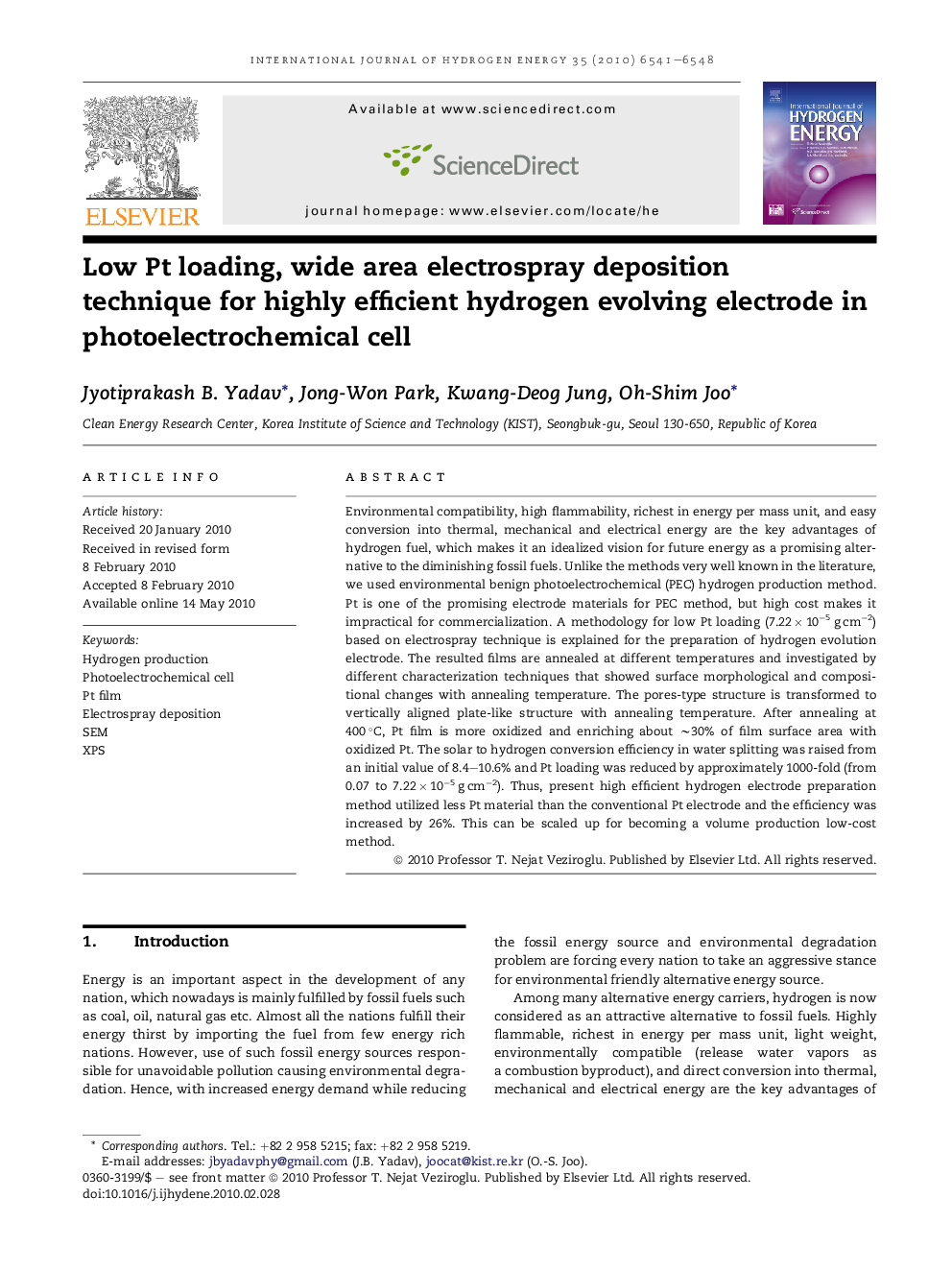| Article ID | Journal | Published Year | Pages | File Type |
|---|---|---|---|---|
| 1272886 | International Journal of Hydrogen Energy | 2010 | 8 Pages |
Environmental compatibility, high flammability, richest in energy per mass unit, and easy conversion into thermal, mechanical and electrical energy are the key advantages of hydrogen fuel, which makes it an idealized vision for future energy as a promising alternative to the diminishing fossil fuels. Unlike the methods very well known in the literature, we used environmental benign photoelectrochemical (PEC) hydrogen production method. Pt is one of the promising electrode materials for PEC method, but high cost makes it impractical for commercialization. A methodology for low Pt loading (7.22 × 10−5 g cm−2) based on electrospray technique is explained for the preparation of hydrogen evolution electrode. The resulted films are annealed at different temperatures and investigated by different characterization techniques that showed surface morphological and compositional changes with annealing temperature. The pores-type structure is transformed to vertically aligned plate-like structure with annealing temperature. After annealing at 400 °C, Pt film is more oxidized and enriching about ∼30% of film surface area with oxidized Pt. The solar to hydrogen conversion efficiency in water splitting was raised from an initial value of 8.4–10.6% and Pt loading was reduced by approximately 1000-fold (from 0.07 to 7.22 × 10−5 g cm−2). Thus, present high efficient hydrogen electrode preparation method utilized less Pt material than the conventional Pt electrode and the efficiency was increased by 26%. This can be scaled up for becoming a volume production low-cost method.
